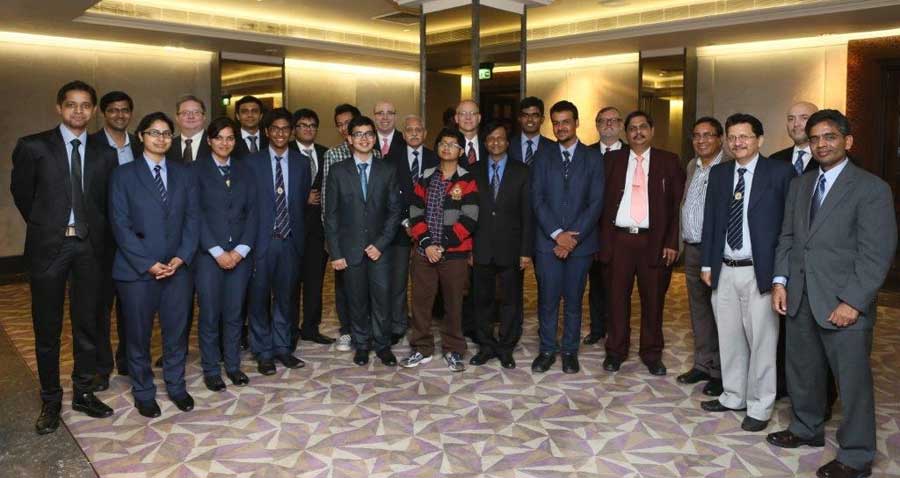Teams from five leading Indian universities presented their conceptual designs to Lockheed Martin officials in New Delhi last week, launching the C-130J Roll-On/Roll-Off University Design Challenge to develop cargo aircraft modules for disaster relief operations worldwide.
Over the next year, the company will fund grants for each university team to work with local industry partners and mentors from the Defence Research and Development Organisation (DRDO) to develop design specifications for their proposed modules. In addition to funding, Lockheed Martin will also support each team with engineering, technical and business development expertise.
The company will award three of the teams a second-year grant in November 2015 to develop a prototype of their module, as well as additional mentoring to develop a go-to-market strategy.At the end of the design challenge, Lockheed Martin will work with each team to explore options with government and industry to mature the prototype for global markets.
“Perhaps more important than producing viable prototypes from this design challenge are the lessons in innovation and collaboration the students will gain from working hands-on with partners in government and industry,” said Dr. Ray O. Johnson, Lockheed Martin senior vice president and chief technology officer. “The challenges we face as a global community are increasingly complex, and we need the best and brightest working together to develop global solutions.”
The university teams participating in the challenge include Indian Institute of Technology (IIT) Delhi, IIT Chennai, Delhi Technological University (DTU), University of Petroleum and Energy Studies (UPES), and Birla Institute of Technological Studies (BITS) Pilani – Goa Campus.
In continuous production longer than any other military aircraft, the C-130 Hercules has earned a reputation as a workhorse ready for any mission, anywhere, anytime. To date, almost 2,500 C-130s have been delivered to operators around the world. The Indian Air Force operates a fleet of five C-130J Super Hercules and is contracted to receive an additional six C-130Js through a foreign military sale with the U.S. Government. Roll-on/roll-off modules increase the capability of the C‑130 beyond core transportation to that of a multi-mission platform.
As a part of its larger commitment to enhance the growth and development of India’s innovation and entrepreneurial pursuits, Lockheed Martin has been successfully running the India Innovation Growth Programme since 2007 in partnership with the IndianDepartment of Science and Technology, Indo-U.S. Science and Technology Forum, Federation of Indian Chambers of Commerce and Industry, Stanford Graduate School of Business and the IC2 Institute at the University of Texas.
Lockheed Martin’s urban unmanned aerial system programme with DTU has been equally successful and forms the basis of the company’s future collaborative research and development efforts in India.






The biggest industry in India should be the manufacturing and production of modern weapons for the defense of the nation. With enemies like China and Pakistan at the doorsteps, does India have another option? The IIT’s and national labs must be asked to upgrade priorities for training the new generations of scientists and engineers. India cannot wait for foreign firms to pity India and share their secrets on the cutting edge equipment no matter how politically convincing. Therefore, do what China has done before everyones’ eyes. Capture through available resources any knowledge, secrets and critical data necessary to augment advancement in materials, processes and designs. Chinese knockoff is not just a funny phrase, it is the mantra that has moved that nation forward into the big league without going through the long and expensive learning curve. Reverse engineering is not to be shied from but a necessary tool for accelerating progress. US, Russia, China and other leading European nations are doing this 24/7 year round for any information that would leverage their development. Take a cue from these nations before it is too late.